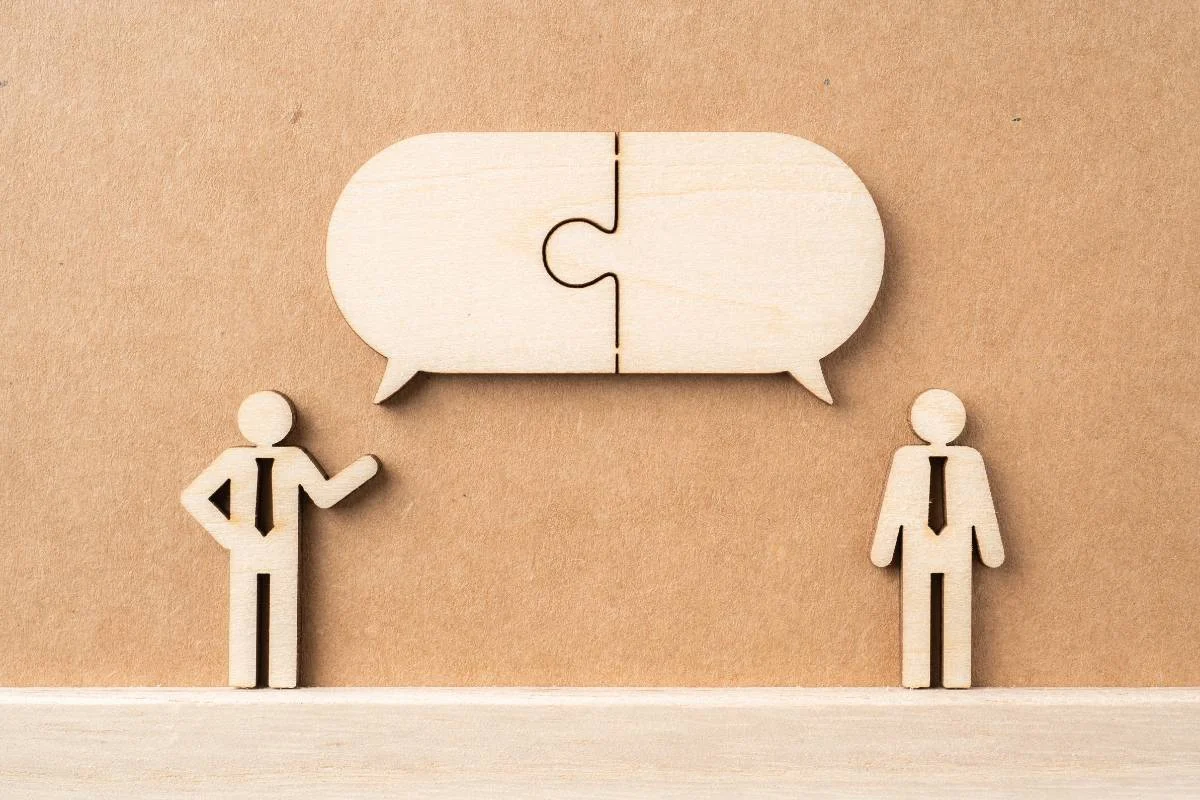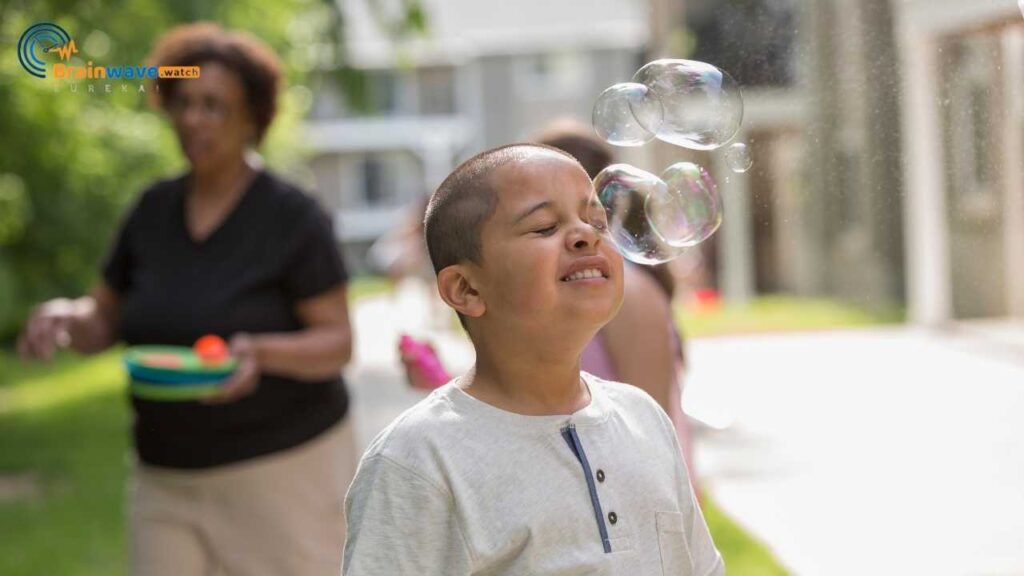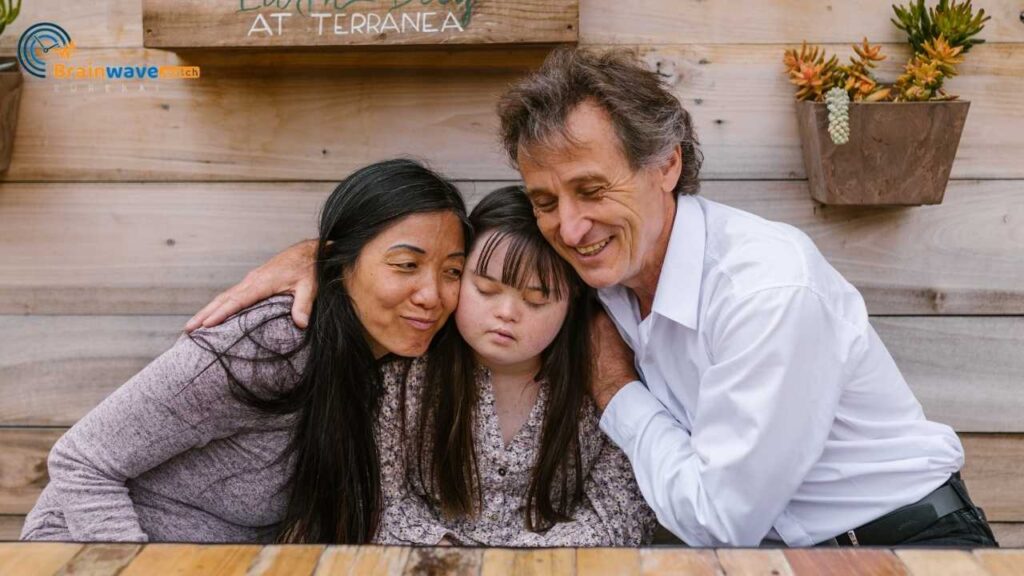Augmentative and alternative communication (AAC) refers to methods of communication that supplement or replace speech for individuals with speech and language impairments. AAC allows people to communicate their needs, thoughts, and ideas when they cannot use verbal speech or when speech is not enough.
AAC devices and methods aim to assist people with everyday communication and enhance their ability to participate in education, employment, and community life. They are especially beneficial for people with conditions such as autism, cerebral palsy, stroke, intellectual disabilities, and traumatic brain injury.
There are two main categories of AAC:
- Aided communication methods require using tools or equipment in addition to the user’s body. This includes high-tech devices like speech-generating devices and low-tech options like picture boards.
- Unaided communication methods rely on the user’s body to convey messages. This involves gestures, body language, sign language, and facial expressions.
AAC devices and techniques play a crucial role in enabling self-expression and interaction for those who have challenges with verbal speech. They allow individuals to communicate basic wants and needs, express preferences, share information, maintain social closeness, and participate in education and employment. AAC provides a means to speak without relying solely on natural speech abilities.
Types of AAC
There are four broad categories of AAC tools and methods:
1. No-Tech AAC
No-tech AAC involves using only the user’s body to communicate. This includes facial expressions, vocalizations, gestures, body language, and sign language. These non-electronic forms of communication utilize the abilities the person already possesses. No-tech AAC options are always available, though they may be limiting for some users.
2. Low-Tech AAC
Low-tech AAC encompasses simple aids and equipment that do not require batteries or electricity. Some examples include picture boards, letter boards, word boards, communication books and boards, and paper-based recording systems. These tools are relatively inexpensive and portable. They work well for users with limited mobility.
3. Mid-Tech AAC
Mid-tech AAC devices have some electronic components with battery power, like voice recorders and talking switches. They offer advantages like recording, storing, and playing back messages. Mid-tech options provide more flexibility and options compared to low-tech tools. They allow for saving multiple messages and some provide text-to-speech capabilities.
4. High-Tech AAC
High-tech AAC devices are complex electronic systems that offer a wide range of capabilities. They include dedicated speech-generating devices, tablets, and computer-based communication software. These tools allow for customized voice output, text-to-speech, internet access, word prediction, and more. High-tech systems are the most versatile but also the most expensive. They are better suited for users with good cognitive and linguistic abilities.
Who Uses AAC?
AAC aids those with complex communication needs. It is designed to supplement or replace speech for individuals with conditions that impair their ability to speak. Some of the main groups that use AAC include:
- Individuals with autism spectrum disorders – Many with autism struggle with verbal communication. AAC provides a way to express needs and thoughts. Systems like picture exchange cards are commonly used.
- Cerebral palsy – Speech motor planning problems are common with cerebral palsy. AAC offers alternate communication modes for those unable to speak or be understood verbally.
- Amyotrophic lateral sclerosis (ALS) – As ALS progresses, it leads to loss of muscle control needed for speech. AAC allows continued communication ability as speech declines. Devices can be controlled via eye tracking.
- Stroke survivors – A stroke can damage parts of the brain needed for speech and language. AAC aids communication during the rehabilitation process.
- Intellectual disabilities – Some with cognitive impairments never develop functional speech. AAC provides a way to interact and aids cognitive development.
The key is that AAC helps those with a wide range of conditions access communication. It empowers those who cannot rely on speech alone. AAC methods are tailored to each person’s unique needs and abilities.
How AAC Works
Augmentative and alternative communication (AAC) refers to methods that supplement or replace speech for individuals with communication disorders. AAC enables people to effectively communicate their wants, needs, thoughts, and ideas. There are many different AAC techniques and technologies that allow expression through means other than speech.
Some common AAC methods include:
- Symbols: Visual symbols like pictures, drawings, and icons can represent words, phrases, or concepts. These are often printed on paper or displayed on communication boards and books. Users point to symbols or hand them to a communication partner to convey meaning.
- Speech-generating devices (SGDs): Electronic SGDs produce digitized or synthesized speech when a user selects a message. Devices may have a screen with visual symbols, words, letters, or pictures that the user activates to generate speech. Some devices are dedicated to communication while others are software programs on tablets.
- Switches: Switches are buttons that users with limited motor skills can activate to control a communication device. Switches allow choices, selections, or scanning through messages. They may be activated by pressing with the hand, foot, head, or other body part. Switches range from simple buttons to eye-gaze technology.
AAC methods take advantage of an individual’s existing abilities, whether it’s their vision, hearing, touch, or body movements. Multiple options can be combined into an integrated system tailored for an individual. With the right support and tools, AAC users can actively engage in communication exchanges.
Choosing AAC Methods
When determining the most appropriate AAC method for an individual, it is important to conduct a thorough assessment. This involves evaluating the person’s motor, sensory, cognitive, and communication skills and abilities. Some key factors to consider include:
- Motor skills – Does the person have voluntary muscle control and movement to access certain tools and technology? Can they perform gestures, point to symbols, type, or utilize eye gaze? Understanding their motor abilities helps determine AAC access methods.
- Vision and hearing – Sensory abilities impact how a person can receive, understand, and express information. Assess vision for selecting visual supports and hearing for auditory tools.
- Cognitive skills – Consider attention span, memory, sequencing, problem-solving, and other thinking skills. This helps determine how much information a system should present at one time.
- Literacy skills – Evaluating reading and writing ability is important, especially for text-based AAC like typing. AAC should aim to leverage existing literacy skills.
- Communication needs – Assess their typical communication partners, environments, and conversation topics. Also, consider their goals and motivation for communicating. All this helps select vocabulary and match the system to real-world communication.
- Trialing devices – Have the individual experiment with potential AAC tools to gauge interests, comfort level, ease of access, and learning. This helps find the right match between user and technology.
The assessment process should identify strengths to build upon and barriers to address. It guides the selection and customization of AAC to maximize the individual’s participation and interaction. Ongoing evaluation ensures the system continues meeting changing needs.
Implementing an AAC System
Implementing an augmentative and alternative communication (AAC) system for someone requires thoughtful planning and training. The goal is to fully integrate AAC into the user’s daily communication.
Training on Device Use
It’s crucial to provide comprehensive training to AAC users on how to operate their devices. For those using high-tech options like speech-generating devices, they’ll need hands-on guidance walking through all the device’s functions and features. It takes consistent practice to become adept at navigating communication software and hardware. Trainers should be patient and encouraging as users learn. Breaking training into multiple short sessions prevents fatigue. Users should be taught how to change settings, customize vocabulary, and troubleshoot technical issues. Hands-on experience is the best way to build device proficiency.
Incorporating AAC Into Daily Activities
Implementing AAC is most successful when it’s woven into the user’s regular daily activities and interactions. Communication partners, such as family, caregivers, and teachers, play a pivotal role. They should prompt the person to use their AAC system frequently throughout the day during activities like meal times, playtime, reading books, and more. This helps make communicating through AAC a natural habit. It’s also important to model effective AAC use by communicating through the person’s device. This further normalizes AAC implementation into everyday life. With consistent immersion and practice, AAC can become a seamless part of how someone communicates.
AAC for Children
Starting AAC early during childhood is crucial for language development. Children who begin using AAC methods before age 5 have better outcomes compared to starting later.
When implementing AAC for children, it’s important to consider their developmental stage. Pre-literate children need AAC systems focused on graphics and symbols. School-aged children benefit from AAC which supports literacy skills.
AAC interventions for children often begin with aided systems. Low-tech options like picture boards are easy to introduce. High-tech speech-generating devices can be added later on. Children tend to transition through different AAC systems as their skills progress.
For preschool kids, AAC focuses on early communication and interaction. Making requests, social closeness, and joint attention are priorities. Building vocabulary and combining symbols are goals in elementary school. Middle school introduces more complex language and social skills.
Getting parents and teachers involved is key to AAC’s success in children. Consistent use of the AAC system across environments lets kids practice skills. Ongoing assessment tracks progress and guides decision-making on when to upgrade AAC tools.
The earlier children begin using AAC, the more it becomes a natural part of their communication. Starting AAC by age 5 allows it to support optimal development.
AAC for Adults
Adults may begin using AAC due to acquired disabilities later in life, such as stroke, brain injury, or neurodegenerative diseases. In these cases, AAC provides a way for adults to maintain communication and participation despite potential loss of speech.
Consistent AAC use allows adults with acquired disabilities to convey their wants and needs, share stories and information, and avoid isolation. Adults benefit from AAC methods tailored to their interests, backgrounds, and personalities. Their insights help customize the vocabulary, interface, and access method of AAC devices.
Adults may face some unique challenges in adopting AAC compared to children. They need to learn a new method of communication after relying on speech most of their lives. Support from speech therapists, AAC specialists, and family helps facilitate this transition. With time and practice, adults can become highly proficient AAC communicators. They serve as role models for others with disabilities in maintaining participation through AAC.
Supporting AAC Users
Supporting someone who uses AAC takes patience, modeling, and responsiveness. Those supporting AAC users should keep the following in mind:
- Have patience – It may take the AAC user more time to communicate their thoughts using their device or system. Avoid finishing their sentences or making assumptions. Give them time to fully communicate at their own pace.
- Model use of the AAC system – If supporting a child using AAC, model how to use the system yourself so they can learn from you. Respond and communicate through the system so they become comfortable with it.
- Respond to all communication – Respond to all communication through the AAC, whether it’s pointing to pictures, pushing buttons, or typing out messages. Reinforce that their communication is valued.
- Create opportunities to communicate – Provide opportunities throughout the day for the AAC user to practice communicating. Ask open-ended questions that require more than a yes/no response.
- Expand on their communication – Build on what the AAC user communicates. If they point to a picture of a ball, you can say “Yes, that is a red ball. Let’s play with the ball!” This shows the power of their communication.
- Troubleshoot issues – If communication is breaking down, troubleshoot by adjusting the environment, your communication, or checking the AAC system. Don’t immediately limit their access.
With patience and learning together, supporting an AAC user leads to increased communication and connection. Focus on responding to all their communication, not just speech.
Future of AAC
The future of AAC looks bright, with new technology, increased access, and greater acceptance on the horizon.
New Technology
Exciting new technology is rapidly evolving in the AAC field. Researchers are exploring the use of eye gaze tracking as a selection method, allowing more independent access for users. Machine learning and artificial intelligence hold promise to provide smart word and phrase predictions to speed up communication. Brain-computer interfaces could one day allow people to communicate through their brain waves. Apps and mobile devices continue to expand AAC options. As technology advances, it opens new possibilities to enhance AAC solutions.
Increased Access
AAC is becoming more widely available and affordable. Insurance coverage is expanding, allowing more people to access needed devices and services. Mainstream technology like tablets provides a platform for AAC apps. Raising awareness among healthcare providers and educators helps identify candidates for AAC sooner. All of these developments are making AAC solutions more accessible for the people who can benefit from them.
Greater Acceptance
Societal acceptance and understanding of AAC have increased over the years. Using a device to communicate is becoming more normalized. Pop culture representation also helps foster acceptance. With AAC users better integrated into schools, workplaces, and communities, it paves the way for full participation. More public awareness can further reduce stigma and validate AAC as a legitimate form of expression. The future points towards AAC becoming an unremarkable and valued way of communicating.









